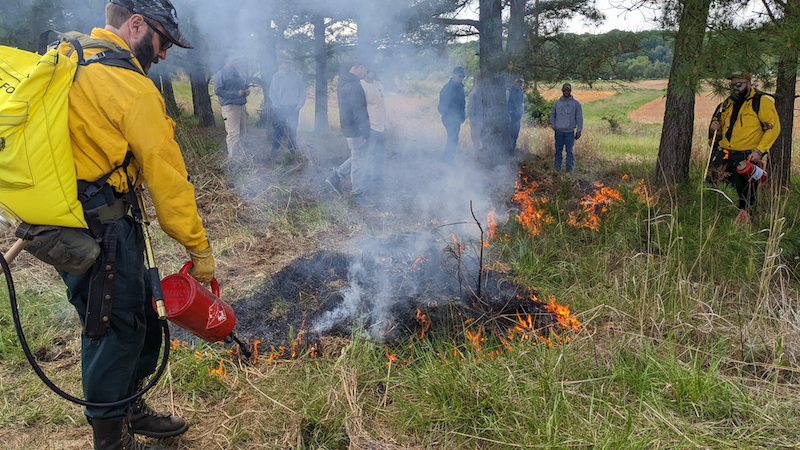Along with partner Tall Timbers, ESLC is honored to receive a 2025 grant from the Cornell Land Trust Bird Conservation Initiative. Fourteen land trusts across the country received a total of $260,000 to be used for bird conservation. “We are incredibly grateful to Cornell for supporting us in this powerfully beneficial management practice, knowing it will greatly uplift the conservation value of our region,” commented ESLC Enhanced Stewardship Manager Larisa Prezioso. Prezioso will work with Tall Timbers’ Delmarva Prescribed Fire Coordinator & Game Bird Biologist Kyle Magdziuk to advance “biologically beneficial blazes,” an initiative to promote and accelerate the use of prescribed fire to enhance bird habitat.
“Prescribed fire is an often misunderstood and underutilized tool on the Eastern Shore,” commented ESLC President and CEO Steve Kline. “ESLC looks forward to equipping landowners with safe, responsible prescribed fire management plans so we can continue to enhance conserved lands and bring back that beloved quail call so many of us miss.”
Over time sprawl development, “edge-to-edge” commercial farming practices, and the compounding pressures of climate change have drastically reduced habitat for grassland and early successional birds like Northern bobwhite, Eastern meadowlarks, and grasshopper sparrows. According to the North American Breeding Bird Survey, 83% of grassland birds experienced significant population declines from 1966 to 2022, with Northern bobwhite quail suffering the largest population loss over the last 50 years, upwards of more than 90% decline in Maryland alone.
While many successful initiatives have restored crucial habitat, continued management has been a challenge since grasslands tend to transition back to forests when left alone. Historically, fire occurred every 4 to 10 years in this region, preventing this transition. Thanks to funding from Cornell, ESLC will work with Tall Timbers to maintain the Eastern Shore’s grassland spaces through the responsible use of prescribed fire.
Upcoming outreach activities include a 2026 “learn and burn” demonstration, creating grassland habitat management plans that utilize prescribed burning for conservation easement landowners, and compiling and distributing resources for landowners to manage their habitat with prescribed fire. “When applied safely, responsibly, and consistently,” Magdziuk explains, “prescribed fire mitigates the risk of wildfires, supports a balanced ecosystem with native plant and wildlife communities, and keeps the ecosystem healthy and resilient, while being one of the most cost-effective tools available.”
To learn more about ESLC’s prescribed burn initiative, please reach out to Larisa Prezioso at [email protected]. To learn more about Tall Timbers or about the brand new Eastern Shore Prescribed Burn Association, please reach out to Kyle Magdziuk at [email protected].
Established in 1990, Eastern Shore Land Conservancy’s mission is to conserve, steward, and advocate for the unique rural landscape of Maryland’s Eastern Shore, forever a special place of diverse and abundant natural resources and thriving rural communities.






